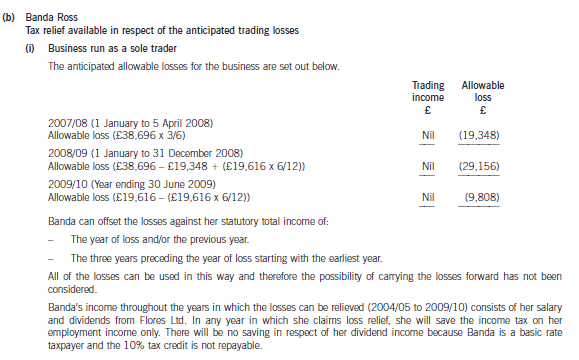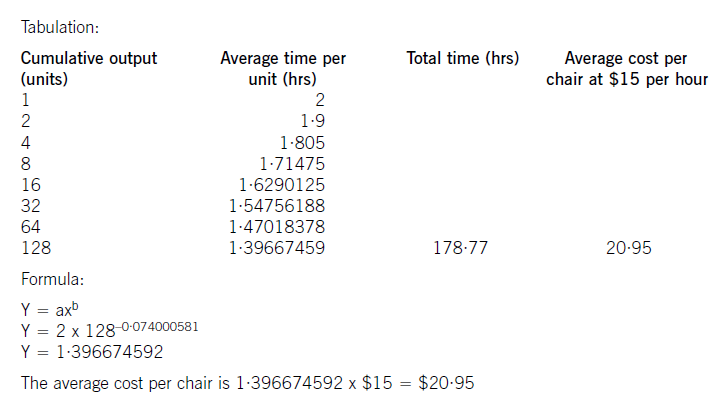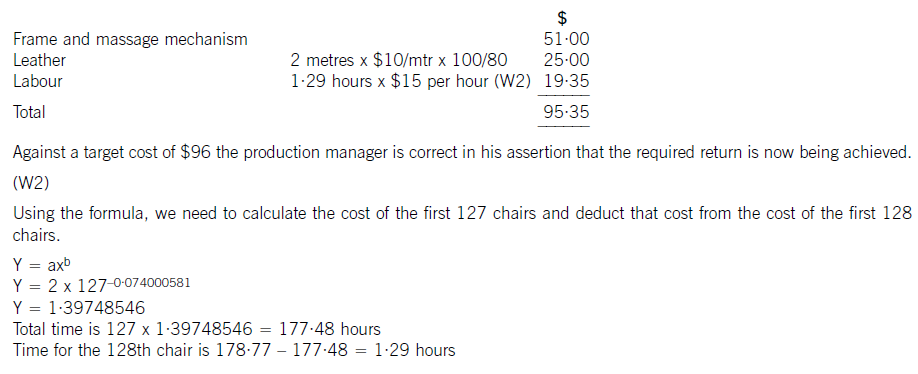广西考生:ACCA考试内容是什么?难度和专业课相比怎样?
发布时间:2020-01-09
第一次听闻ACCA考试的同学可能只知道其证书的含金量是十分高的,但当听到ACCA考试的考试科目多达13科的时候,可能有些同学就会打退堂鼓了。其实,51题库考试学习网想告诉大家的是,ACCA考试并不是高不可攀的,任何一场考试他都是有难度的,但只要自己付出过汗水,努力过,即使没有通过也不会留下遗憾。可能这样说大家还是感觉到很空洞吧,那么51题库考试学习网就结合当下同学们目前正在学习的学校专业课程与ACCA考试的科目进行比较,让你们更加直观地感受ACCA考试的具体内容。
和大学课程相比,ACCA的难度如何?
相比较国内会计师考试,ACCA对于报考要求很低,最明显的一点就是它不要求你需要从事此行业到一定年限才可以报考,即使是没接触过会计学科知识的人,通过ACCA的考试的系统化的学习、记忆和理解,也能建立起系统的会计学科知识。
ACCA考试分为基础阶段和专业阶段。因为ACCA总部是在英国,所以考试的难度是以英国大学学位考试的难度为标准,换到国内的水平就是:基础课程的难度相当于学士学位高年级课程的考试难度,专业阶段课程的考试相当于硕士学位的考试。再说简单点就是,基础阶段是国内大学水平,专业阶段是国内硕士水平。所以更大学的专业课程相比,基础阶段的知识还能勉强用大学所学的知识应付,而到了专业阶段就可能不适用了,因此必须要去学习专业阶段的知识。ACCA的课程使学员全面掌握财务、财务管理、审计、税务及经营战略等方面的专业知识,提升分析能力并拓宽战略思维。
与国内注会拔高式的考试内容不同,ACCA的知识体系是呈阶梯式递进的。难度也是层层递进的,因此即便是非财会专业出身,也不必担心吃不透某个基础概念的状况。如果你是财会专业出身,ACCA学起来不但更为轻松,高级阶段教授的知识内容也能你让你提前领会在校期间学不到的商业奥义。
考完ACCA需要多长时间呢?
听到考试科目多达13科目是不是被吓到了?一次性同时备考13个科目压力还是太大了。所以,ACCA官方给了你7年时间去完成整个考试,不过大家不要怕,基本上大多数学生只需要花2-4年的时间就可以全部考完。当然前提是你每个阶段都是认真学习的情况下。
英语不好学ACCA会不会困难?
简单来说,ACCA里的英文水准可能等同于国家三级水准,只要在大学考试通过了CET-4的同学,一般来说没什么参加ACCA考试不会吃看不懂单词的亏。学ACCA不是学英语,只要表述没有问题,考官不会在意你用的是什么华丽的句式或者无伤大雅的语病。而且语感这东西,在学习的过程中是能逐渐培养出来的,也就是所谓的“套路”。
需要注意的地方是:ACCA里很多是会计专业词汇,我们平时学的英语单词很少用上。而且在ACCA培训班,老师解释的时候都用中文,这样字典也不用查了,况且不少专业词汇的用法在普通字典里是查不到的,比如premium既可以解释为“溢价”,又可以解释为“定金/押金”,普通字典查不到这种解释,大学四六级雅思什么的也没有这种解释。所以说,51题库考试学习网建议大家购买专业的英文字典,可以去ACCA官网了解一下相关字典是通过何种渠道获得的。
ACCA能否通过,要看你付出到什么程度。
ACCA考试虽然有一定的难度,但是绝对是在大家能力范围之内的——只要你努力。如果你想不花精力和时间就通过ACCA的话,通过考试也只是痴人说梦。想要通过ACCA肯定是要做出一定的牺牲的。俗话说,贵在坚持,也就是说,ACCA的难度其实取决于你自己。通过率的高低其实与我们没有太大的关系,通过率再高,你不认真学习,也是通不过的。
如何平衡ACCA考试与大学生活
在大学生活中,如果备考ACCA考试,那么首先要面临的问题就是如何平衡考试与大学生活了。大学专业课的绩点与排名,对自己能否拿到学位证和学历证以及对今后的考研或出国来说,还是有着至关重要影响的,所以51题库考试学习网建议在ACCA的复习备考的基础上要首先完善好大学的相关课程和作业,因为毕竟ACCA考试的年限长达7年,而大学也就4年左右。所以,该做取舍的时候就还是可以做取舍的。建议大家在大学期间每一个考季不用报考满4个科目,根据自己的学习时间来制定相应的计划就可以了。
另外,合理利用自己周末的时间,这就是大学生复习时间的主要来源。对当天所讲的内容进行全面的复习与刷题会比较困难,所以我个人建议,对于一些难度大的知识点要确保在讲授当天及时复习巩固,其他的知识点如果来不及,可以分散到周一到周五去抽一定的时间复习,并保证一定的刷题量,这样才能加深对相应知识点的印象,提高复习的效率,减轻备考时的工作量。
在文章的最后,51题库考试学习网想与大家分享一句话:“人不能漂泊一辈子,但在声嘶力竭之前就安居乐业也未免可惜。”既然选择了报考ACCA这条道路,那就坚持下去,让生命在汗水与努力中呐喊出最灿烂的色彩,大家加油~。
下面小编为大家准备了 ACCA考试 的相关考题,供大家学习参考。
(b) The tax relief available in respect of the anticipated trading losses, together with supporting calculations and
a recommended structure for the business. (16 marks)


Aral Ltd owned by Banda
The losses would have to be carried forward and deducted from the trading profits of the year ending 30 June 2010.
Aral Ltd cannot offset the loss in the current period or carry it back as it has no other income or gains.
Aral Ltd owned by Flores Ltd
The two companies will form. a group relief group if Flores Ltd owns at least 75% of the ordinary share capital of Aral
Ltd. The trading losses could be surrendered to Flores Ltd in the year ending 30 June 2008 and the year ending
30 June 2009. The total tax saved would be £11,079 ((£38,696 + £19,616) x 19%)
Recommended structure
The Aral business should be established in a company owned by Flores Ltd.
This will maximise the relief available in respect of the trading losses and enable relief to be obtained in the period in
which the losses are incurred.
Tutorial note
The whole of the loss for the period ending 30 June 2008 can be surrendered to Flores Ltd as it is less than that
company’s profit for the corresponding period, i.e. £60,000 (£120,000 x 6/12).
Big Cheese Chairs (BCC) manufactures and sells executive leather chairs. They are considering a new design of massaging chair to launch into the competitive market in which they operate.
They have carried out an investigation in the market and using a target costing system have targeted a competitive selling price of $120 for the chair. BCC wants a margin on selling price of 20% (ignoring any overheads).
The frame. and massage mechanism will be bought in for $51 per chair and BCC will upholster it in leather and assemble it ready for despatch.
Leather costs $10 per metre and two metres are needed for a complete chair although 20% of all leather is wasted in the upholstery process.
The upholstery and assembly process will be subject to a learning effect as the workers get used to the new design.
BCC estimates that the first chair will take two hours to prepare but this will be subject to a learning rate (LR) of 95%.
The learning improvement will stop once 128 chairs have been made and the time for the 128th chair will be the time for all subsequent chairs. The cost of labour is $15 per hour.
The learning formula is shown on the formula sheet and at the 95% learning rate the value of b is -0·074000581.
Required:
(a) Calculate the average cost for the first 128 chairs made and identify any cost gap that may be present at
that stage. (8 marks)
(b) Assuming that a cost gap for the chair exists suggest four ways in which it could be closed. (6 marks)
The production manager denies any claims that a cost gap exists and has stated that the cost of the 128th chair will be low enough to yield the required margin.
(c) Calculate the cost of the 128th chair made and state whether the target cost is being achieved on the 128th chair. (6 marks)

(W1)
The cost of the labour can be calculated using learning curve principles. The formula can be used or a tabular approach would
also give the average cost of 128 chairs. Both methods are acceptable and shown here.

(b) To reduce the cost gap various methods are possible (only four are needed for full marks)
– Re-design the chair to remove unnecessary features and hence cost
– Negotiate with the frame. supplier for a better cost. This may be easier as the volume of sales improve as suppliers often
are willing to give discounts for bulk buying. Alternatively a different frame. supplier could be found that offers a better
price. Care would be needed here to maintain the required quality
– Leather can be bought from different suppliers or at a better price also. Reducing the level of waste would save on cost.
Even a small reduction in waste rates would remove much of the cost gap that exists
– Improve the rate of learning by better training and supervision
– Employ cheaper labour by reducing the skill level expected. Care would also be needed here not to sacrifice quality or
push up waste rates.
(c) The cost of the 128th chair will be:
4 Graham Smith is Operations Director of Catering Food Services (CFS) a £1·5 billion UK based distributor of foods to
professional catering organisations. It has 30 trading units spread across the country from which it can supply a
complete range of fresh, chilled and frozen food products. Its customers range from major fast food chains, catering
services for the armed forces down to individual restaurants and cafes. Wholesale food distribution is very much a
price driven service, in which it is very difficult to differentiate CFS’s service from its competitors.
Graham is very aware of the Government’s growing interest in promoting good corporate environmental practices and
encouraging companies to achieve the international quality standard for environmentally responsible operations. CFS
operates a fleet of 1,000 lorries and each lorry produces the equivalent of its own weight in pollutants over the course
of a year without the installation of expensive pollution control systems. Graham is also aware that his larger
customers are looking to their distributors to become more environmentally responsible and the ‘greening’ of their
supply chain is becoming a real issue. Unfortunately his concern with developing a company-wide environmental
management strategy is not shared by his fellow managers responsible for the key distribution functions including
purchasing, logistics, warehousing and transportation. They argued that time spent on corporate responsibility issues
was time wasted and simply added to costs.
Graham has decided to propose the appointment of a project manager to develop and implement a company
environmental strategy including the achievement of the international quality standard. The person appointed must
have the necessary project management skills to see the project through to successful conclusion.
You have been appointed project manager for CFS’s ‘environmentally aware’ project.
Required:
(a) What are the key project management skills that are necessary in achieving company-wide commitment in
CFS to achieve the desired environmental strategy? (15 marks)
(a) Simply defined, a project is ‘activity that has a start, a middle and an end and consumes resources’ – it is therefore a discrete
activity aimed at achieving a specific objective or range of objectives. Graham is intent on using the ‘environmentally aware’
project to achieve a specific objective – the attainment of the international environmental standard. He is, however, aware
that there are a number of internal stakeholders inside the company who question the significance of such a project.
Externally, he can point to significant stakeholders, including customers and government who are looking for CFS to become
more environmentally aware. The project is likely to have strategic and not simply operational or administrative significance
and the person appointed into the role of project manager, ideally, should have both the traditional skills associated with
project management plus those of strategic management. Grundy and Brown list the traditional project management
techniques as:

Clearly, the project manager must have the technical project management skills, being able to manage the project through its
life cycle, which involves defining the project in terms of project objectives and scope as defined by time, cost and quality.
Planning the project in terms of breaking the overall project down into separate activities, estimating the resources required
and linking activities to resources in terms of time and priorities. Implementing the plan, including reviewing the progress in
meeting time and cost objectives and taking corrective action where and when necessary. Finally, reviewing the outcomes of
the project in terms of what was delivered to the customer and the extent to which client expectations were met.
The strategic nature of the project means that the project manager must have significant leadership skills, not only of the
project team, who are likely to come from different functions and parts of the company, but also influential stakeholders inside
and outside the company. This implies they should have good ‘political’ and communication skills as the project is of strategic
significance to the company. The ability to show how this particular project fits with the overall strategy of the firm is
important. The project is an important part in the achievement of the company strategy and in CFS’s case may help it
differentiate itself from its competitors. However, the project manager must recognise that there will be resistance from existing
managers reluctant to see resources committed to projects outside of the traditional value chain of the company. Certainly,
the project manager for the ‘environmentally aware’ project will themselves need to be aware of the external environmental
pressures prompting the firm to set itself specific environmental objectives and be able to link into supportive networks and
alliances. Finally, Grundy and Brown argue that the project manager will be the key to reviewing and learning from the project,
assessing whether defined objectives were achieved, the effectiveness or otherwise of the implementation process and how
key stakeholders were managed. The danger is that projects are seen as ‘one-off’ rather than contributing to the knowledge
and learning of the organisation. There may be a significant ‘learning curve’ that the firm has to go down and look tocontinuously improve its project management process.
声明:本文内容由互联网用户自发贡献自行上传,本网站不拥有所有权,未作人工编辑处理,也不承担相关法律责任。如果您发现有涉嫌版权的内容,欢迎发送邮件至:contact@51tk.com 进行举报,并提供相关证据,工作人员会在5个工作日内联系你,一经查实,本站将立刻删除涉嫌侵权内容。
- 2020-04-22
- 2020-01-10
- 2020-01-10
- 2020-01-10
- 2020-05-02
- 2020-01-09
- 2020-01-10
- 2020-05-16
- 2020-01-10
- 2020-01-10
- 2020-01-31
- 2020-01-09
- 2020-01-10
- 2020-04-14
- 2020-01-10
- 2021-08-08
- 2020-04-08
- 2020-01-10
- 2020-03-11
- 2020-01-29
- 2020-04-18
- 2020-01-10
- 2020-01-10
- 2020-01-10
- 2020-04-23
- 2020-05-09
- 2020-01-10
- 2020-08-16
- 2020-03-29
- 2020-04-18